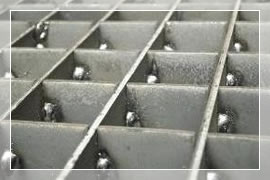-
+86 15030157877
-
sales@galvanizedmetalmesh.com
Авг . 19, 2024 23:07 Back to list
Wire Fence Pricing Trends Among Leading Exporters Worldwide
Wire Fence Prices and Exporters An Overview
Wire fencing is a crucial element in agricultural practices, construction, and property management. As the demand for effective and durable fencing solutions continues to rise globally, understanding wire fence prices and the role of exporters in this market becomes increasingly important. This article delves into the factors influencing wire fence prices and explores the landscape of exporters in this industry.
Factors Influencing Wire Fence Prices
1. Material Quality The primary determinant of wire fence prices is the quality of the material used. Common materials include galvanized steel, stainless steel, and PVC-coated wire. Galvanized wire, which is coated with a layer of zinc for corrosion resistance, is the most popular choice. The thickness and tensile strength of the wire also play critical roles in pricing, with thicker, stronger wires commanding higher prices due to their increased durability.
2. Type of Fence There are various types of wire fences, such as barbed wire, welded wire, and chain-link fences, each priced differently. Barbed wire is generally more affordable, while welded wire and chain-link fences, which offer enhanced security and stability, tend to be more expensive. The design complexity and additional features, like coatings or UV resistance, can further impact costs.
3. Market Demand and Supply Prices of wire fences can fluctuate based on market dynamics. High demand in specific seasons, such as before planting or around harvest times in agricultural regions, can drive prices up. Conversely, oversupply or a decrease in demand, perhaps due to economic downturns, can lead to lower prices.
4. Geographical Location Location plays a significant role in pricing, as transportation costs can add significantly to the final price of wire fencing products. Exporters must consider shipping costs, tariffs, and local market conditions when setting prices for international markets.
5. Export Regulations and Tariffs Countries impose various tariffs and regulations on imported wire fencing products, which can significantly influence pricing for exporters. Understanding these regulations is essential for maintaining competitive pricing in international markets.
wire fence prices exporters

The Role of Exporters
Exporters are essential players in the wire fence industry, facilitating the availability of these products across borders. They not only help local manufacturers reach international markets but also ensure that buyers have access to diverse fencing products that may not be readily available in their region.
1. Marketplace Connectivity Exporters connect manufacturers to customers worldwide, providing insight into pricing trends and consumer preferences in various markets. By distributing wire fences to different regions, they help keep supply chains efficient and responsive.
2. Product Variability Many exporters specialize in specific types of wire fencing, offering a diverse range of products to cater to varying customer needs. They often provide customized solutions, allowing buyers to choose specific materials, styles, and sizes that suit their requirements.
3. Market Intelligence Successful exporters keep a close watch on industry trends, competitor pricing, and market demands. This information helps them adjust their offerings and pricing strategies effectively, providing them with a competitive edge in the marketplace.
4. Quality Assurance Reputable exporters often work closely with their manufacturers to ensure product quality meets international standards. They play a crucial role in maintaining the integrity of the wire fencing products, ensuring that customers receive reliable and durable solutions.
Conclusion
In summary, wire fence prices are determined by a multitude of factors including material quality, type of fence, market demand, geographical influences, and export regulations. Exporters serve as vital intermediaries, connecting manufacturers with markets and ensuring a steady flow of wire fencing products across borders. As the demand for robust and reliable fencing solutions continues to grow, understanding the intricacies of pricing and the role of exporters will be crucial for both suppliers and buyers in navigating this dynamic industry.
-
Premium Hexagonal Gabion Mesh Solutions | Durable & Eco-Friendly
NewsAug.03,2025
-
Smart AI Fence Solutions with GPT-4 Turbo | Secure & Fast
NewsAug.02,2025
-
Welded Gabion Solutions: Durable & AI-Enhanced Designs
NewsAug.01,2025
-
Premium Welded Gabion Mesh | Robust & Eco-Friendly
NewsJul.31,2025
-
Premium Eco-Friendly Roof Tiles | Affordable & Durable
NewsJul.31,2025
-
Premium Roof Tiles for Durable & Stylish Roofing Solutions
NewsJul.30,2025



